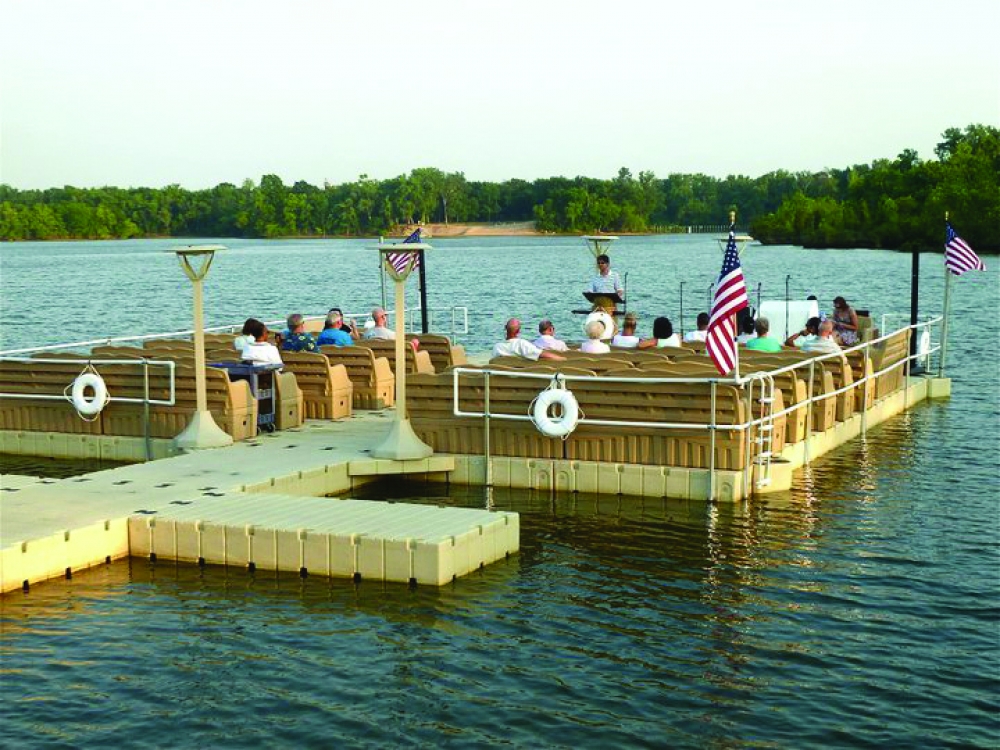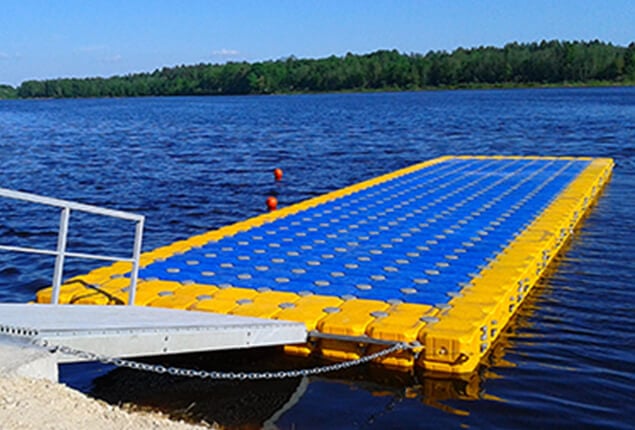Create the Perfect Docking Option With Floating Docks
Floating docks present a flexible remedy for a selection of maritime requirements, adapting seamlessly to rising and fall water levels and diverse vessel kinds. Their modular nature permits fast installation and moving, yet the selection of ideal materials and style functions is critical for making sure both functionality and aesthetic charm. As we check out the necessary elements that add to the efficiency of floating docks, a number of key factors pertaining to security and upkeep will certainly emerge, questioning about exactly how to optimize your docking experience. The succeeding discussion will illuminate these important factors to consider.

Benefits of Floating Docks
Floating docks offer many benefits that make them a suitable choice for various maritime applications. Unlike dealt with docks, floating docks rise and autumn with the trend, ensuring consistent ease of access for vessels.
Additionally, floating docks are usually less complicated and quicker to install compared to traditional set structures. Their modular design enables straightforward assembly and disassembly, assisting in maintenance and relocation when necessary. This flexibility is particularly advantageous for temporary applications or in environments where conditions might alter.
Floating docks also often tend to be much more eco pleasant, as they lessen interruption to the seabed and bordering water ecosystems. Their buoyant nature decreases the risk of damage to aquatic life, advertising a healthier atmosphere. Furthermore, these docks can be tailored to suit different vessel dimensions, guaranteeing that they satisfy certain operational needs - floating dock builder.
Eventually, the mix of adaptability, ease of installation, and environmental factors to consider makes floating docks a highly efficient option for a wide variety of maritime needs.
Selecting the Right Materials
Choosing the appropriate products for floating docks is essential to guarantee sturdiness, durability, and security. The choice of materials directly affects the dock's performance in various ecological conditions, including direct exposure to water, sunshine, and possible wear from aquatic traffic.
Typical materials made use of for floating docks include light weight aluminum, timber, and high-density polyethylene (HDPE) Aluminum is light-weight, corrosion-resistant, and needs very little upkeep, making it an exceptional choice for longevity. Its initial price can be higher contrasted to other products.
Wood, while cosmetically enticing and supplying a typical look, can be susceptible to rot and bug damage otherwise effectively treated. Therefore, utilizing pressure-treated timber or normally sturdy species like cedar or redwood can mitigate these issues.
HDPE is a preferred option due to its resistance to UV rays and chemicals, along with being ecologically friendly. floating dock services. It is lightweight and readily available in various shades, enabling customization
Inevitably, the right product selection will depend on specific requirements, consisting of spending plan, wanted appearances, and environmental factors to consider. Careful analysis of these factors will bring about a effective and durable floating dock remedy.
Layout Factors To Consider for Security
When creating floating docks, making certain security is a fundamental facet that can significantly influence their capability and safety. Stability in floating dock design is influenced by numerous factors, consisting of buoyancy, weight distribution, and the plan of components. An optimum buoyancy system must use products that give sufficient lift while lessening weight. This balance ensures that the dock stays above water, also under differing loads.
Weight circulation is crucial; uniformly distributing lots throughout the dock stops tilting and boosts security. This can be attained via tactical positioning of docking equipment, such as cleats and fenders, along with appropriate spacing of drifts. In addition, the measurements of the dock ought to be thoughtfully prepared. Wider designs can provide raised security, especially in harsh water problems, while longer docks may call for additional supports to avoid drooping.
One more key factor to consider is the ecological effect, including wave activity and wind. Incorporating functions such as sidewalls or skirting can assist mitigate the effects of environmental forces, keeping security in damaging conditions. Ultimately, a mix of thoughtful style, product option, and understanding of ecological variables will certainly produce a drifting dock that meets both stability and safety and security needs.
Installment Tips and Methods

Following, safeguard the essential authorizations and comply with neighborhood guidelines, which might dictate installation methods and environmental factors to consider. Involve a qualified contractor experienced in floating dock setups if called for. Use premium materials designed for aquatic atmospheres to improve sturdiness and longevity.
When placing the dock, straighten it parallel to the shoreline to facilitate very easy accessibility. Make certain that the anchoring system is durable, using concrete blocks or helical anchors to maintain the dock versus wind and wave action. It's crucial to make up seasonal water degree fluctuations, consisting of prospective ice movement in cooler climates.
During the installation, double-check the dock's floatation and security before finalizing the anchoring. Frequently inspect the setup for any indicators of wear or damage. By following these methods and tips, you can accomplish a secure, practical, and cosmetically pleasing floating dock installment that meets your requirements.
Upkeep and Treatment Guidelines
Caring and keeping for floating docks is critical to extending their lifespan and ensuring secure use. Routine inspections should be performed to recognize any type of signs of wear, damage, or marine you can try this out growth. Search for fractures, loosened fittings, or stained areas on the dock's surface, as these problems can jeopardize architectural stability.
Cleansing is essential. Use a pressure washer to remove algae, barnacles, and debris, which can build up in article source time. For stubborn growth, think about eco pleasant cleaner that will not hurt water life.
Furthermore, inspect the mooring lines and anchors often to ensure they are safe and complimentary from deterioration. Change any kind of torn or harmed lines immediately to preserve stability.
During severe weather condition, such as storms or freezing conditions, take precautionary actions. Safeguard the dock with extra mooring lines and, if possible, remove any detachable components to stop damages.
Final Thought
In final thought, the execution of floating docks presents a efficient and functional docking service ideal for various maritime applications. With appropriate installation and routine upkeep, floating docks can give reputable and reliable docking experiences for a large range of vessels.
As we check out the crucial aspects that contribute to the effectiveness of floating docks, a number of essential variables relating check out this site to stability and upkeep will certainly arise, raising questions regarding how to optimize your docking experience. Unlike taken care of docks, floating docks surge and autumn with the tide, guaranteeing consistent ease of access for vessels.When creating floating docks, making certain security is a fundamental aspect that can substantially impact their capability and safety and security. Security in floating dock layout is affected by numerous variables, consisting of buoyancy, weight circulation, and the arrangement of components. Ultimately, a combination of thoughtful design, material selection, and understanding of environmental factors will certainly yield a drifting dock that fulfills both security and security demands.